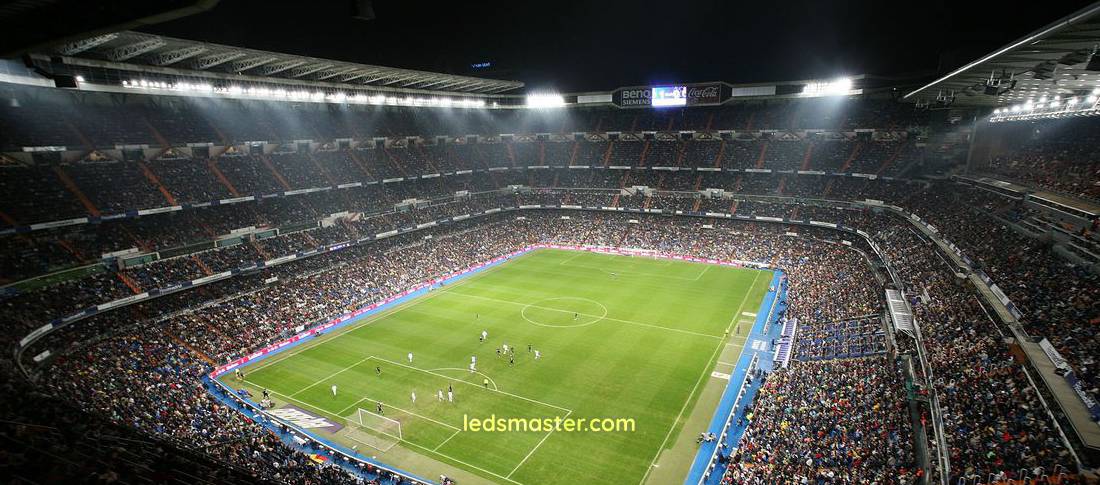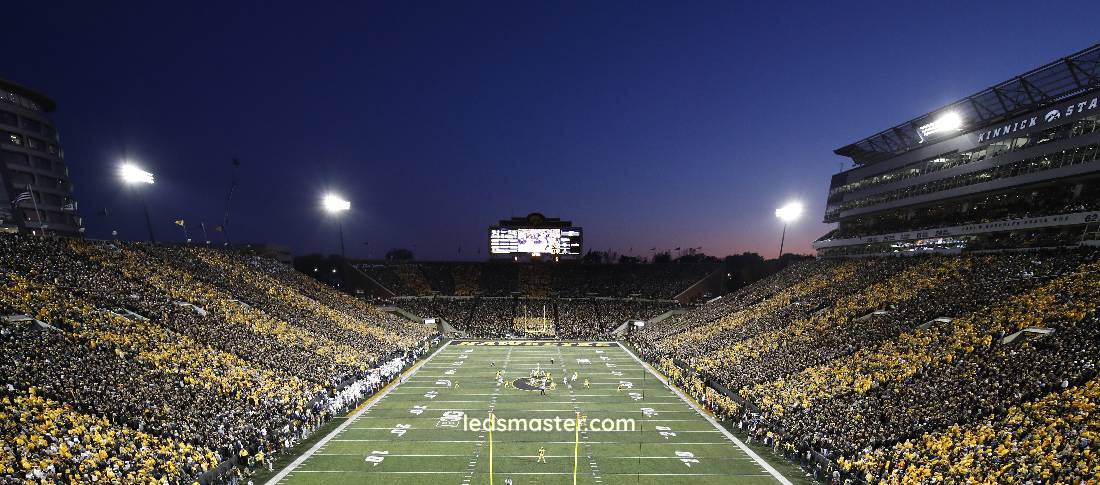The primary issue with traditional stadium lighting is the extensive time it takes for the lights to reach full brightness. Metal halide and high-pressure sodium lamps can take anywhere from 15 to 30 minutes to achieve their maximum light output. This delay is a significant inconvenience, especially when considering the logistical complexities involved in organizing and executing events that rely on these lights. The problem is compounded by the need for consistent and reliable lighting, essential for the optimal performance of athletes and the enjoyment of spectators.
Table of Contents
ToggleImpacts to Key Stakeholders
Event Organizers
The slow warm-up time of stadium lights significantly impacts event organizers. The unpredictability of light readiness can cause substantial delays in event schedules. This unpredictability requires organizers to account for additional time, often leading to events being scheduled earlier than necessary. Such adjustments complicate logistics, as everything from athlete preparations to spectator arrivals needs to be recalibrated. The uncertainty around lighting readiness can also lead to last-minute changes, which can disrupt the entire event flow.
Additionally, delays caused by lighting issues can lead to dissatisfaction among attendees. When events start late, it affects the overall experience of the spectators, who may have other plans or time constraints. This dissatisfaction can translate to negative reviews and a tarnished reputation for the event organizers, potentially impacting future ticket sales and revenue. Furthermore, the operational costs increase as organizers may need to pay for additional hours of staff time and extended use of the facility, not to mention the increased energy consumption due to the prolonged warm-up period of the lights.

Athletes
Athletes are directly impacted by the quality and timing of stadium lighting. Optimal performance is heavily dependent on consistent and bright lighting. Delays in achieving full brightness can disrupt athletes’ warm-up routines and preparation, which are meticulously timed and essential for peak performance. Poor lighting conditions can lead to decreased visibility, making it harder for athletes to perform at their best and increasing the risk of injury.
For instance, in sports like football or baseball, players need to track fast-moving objects against varying backgrounds. Inadequate lighting can cause delays in reaction times and misjudgments, affecting the outcome of the game. The psychological impact is also significant, as athletes may feel less confident and more stressed when the lighting is subpar. Ensuring that the lights are at full brightness from the moment they step onto the field is crucial for their mental and physical readiness.
Spectators
Spectators’ experiences are greatly influenced by stadium lighting. When lights take too long to warm up, events may start later than scheduled, leading to frustration and disappointment. Spectators plan their attendance around the advertised start times, and delays can disrupt their schedules. This is particularly problematic for families with young children, people with tight schedules, or those relying on public transportation.
Moreover, the initial moments of an event are crucial for building excitement and setting the tone. If the lighting is inadequate at the start, it can dampen the atmosphere and diminish the overall experience. Poor lighting can also affect the visibility of the action on the field, leading to a less enjoyable viewing experience. This can result in negative word-of-mouth and reviews, which can deter future attendance. Ensuring optimal lighting from the outset is essential to maintaining a vibrant and engaging environment for spectators.
Facility Managers and Maintenance Staff
Facility managers and maintenance staff face a unique set of challenges due to the long warm-up times of traditional stadium lights. The extended warm-up period increases wear and tear on the lighting systems, leading to more frequent maintenance and higher costs. The unpredictability of light readiness means that staff need to be on hand earlier and for longer periods, increasing labor costs and logistical complexity.
Moreover, traditional lights consume a significant amount of energy during the warm-up period, contributing to higher electricity bills and a larger carbon footprint. Facility managers need to balance the operational demands with sustainability goals, and the inefficiency of traditional lights makes this balance difficult to achieve.
The need for additional staff to manage lighting operations further strains resources. These staff members are responsible for ensuring that the lights are turned on well in advance, monitoring the warm-up process, and troubleshooting any issues that arise. This adds to the overall operational burden and costs associated with running the facility.

Reasons for the Long Warm-Up Time
Technology Behind Metal Halide and High-Pressure Sodium Lamps
The lengthy warm-up time of traditional stadium lights is primarily due to the technology behind metal halide and high-pressure sodium lamps. These lamps operate by passing an electric current through a gas-filled tube, which excites the gas and produces light. However, achieving the desired level of excitation and subsequent light output takes time.
Metal halide lamps, for instance, consist of an arc tube that contains a mixture of gases, including mercury and metal halides. When an electric current is applied, an initial arc discharge occurs between the electrodes inside the tube, ionizing the gases and initiating the lighting process. High-pressure sodium lamps operate on a similar principle but use sodium vapor as the primary gas. Both types of lamps rely on a gradual increase in temperature and pressure to achieve their full light output.
Gradual Increase in Pressure and Light Output
When high-intensity discharge (HID) lamps are first switched on, the arc discharge begins to heat the gas within the lamp. This heating process causes the internal pressure to rise gradually, a critical factor for the lamp’s operation. As the pressure builds, the light output correspondingly increases, moving from a dim initial state to full brightness over a period. This gradual ramp-up is due to the nature of the gases and materials used within the lamp, which require time to reach their optimal operating temperature and pressure. Hastening this process is not advisable as it could lead to damage or reduced lifespan of the lamp, compromising both performance and reliability.
Once HID lamps are turned off, they cannot be immediately switched back on due to the need for the lamp to cool down. This cooling period allows the pressure and temperature within the lamp to stabilize, ensuring that the lamp can be safely and effectively reignited. This requirement for a cooldown period before reactivation adds complexity to their use, especially in dynamic environments where lighting needs can change rapidly. In such settings, the slow warm-up and cool-down phases can be a significant drawback, limiting the flexibility and responsiveness of the lighting system. This makes HID lamps less ideal for scenarios requiring quick changes in lighting, such as stage performances or sports events, where immediate and reliable lighting adjustments are crucial.
Solutions and Recommendations for LED Lighting
Instant Illumination
The transition to LED (light-emitting diode) lighting technology addresses many challenges associated with traditional stadium lighting solutions. Unlike metal halide and high-pressure sodium lamps, LEDs provide instant illumination with no warm-up time. As soon as the LEDs are turned on, they reach their full brightness immediately, eliminating the delays often experienced with conventional lighting systems. This rapid start-up capability is particularly beneficial for live events and sports matches, where punctuality is crucial. Additionally, LEDs offer superior light quality compared to traditional lamps, with enhanced color rendering and uniformity. This improves visibility for athletes and enhances the viewing experience for spectators, ensuring that every detail is crisp and clear.
Energy Efficiency
In addition to their performance benefits, LEDs are highly energy-efficient. They consume significantly less power than their metal halide and high-pressure sodium counterparts while delivering equivalent or even superior light output. This efficiency not only reduces electricity costs but also contributes to lower carbon emissions, supporting the sustainability goals of modern stadiums and event organizers. By adopting LED technology, stadiums can achieve significant energy savings and reduce their environmental footprint.
Reduced Maintenance
Furthermore, LEDs have a much longer lifespan compared to traditional lighting options. This extended durability reduces the frequency of replacements and maintenance efforts, which can be both costly and disruptive. The robustness of LED lights also means they are more resistant to shock and vibration, making them ideal for the demanding conditions of stadium environments. The long lifespan and enhanced durability of LEDs translate into substantial cost savings and more reliable performance over time, making them a practical and economical choice for stadium lighting.
Initial Investment and Cost-Benefit Analysis
The initial investment in LED technology can be higher than traditional lighting systems. However, the long-term savings in energy costs, maintenance, and improved event scheduling justify this upfront cost. Facility managers should conduct a cost-benefit analysis to understand the financial implications and benefits of switching to LED lighting.
Design and Placement
The design and placement of LED lights need to be carefully planned to ensure optimal coverage and uniformity. Stadiums have unique lighting requirements, and it is essential to work with experienced lighting designers and engineers to create a system that meets these needs. Proper placement of lights, along with the use of advanced control systems, can enhance the lighting experience and ensure that all areas of the stadium are adequately illuminated.
Smart Lighting Controls
Integrating smart lighting controls with LED systems can further enhance their benefits. Smart controls allow for precise management of lighting levels, enabling adjustments based on the specific requirements of different events. For example, the lighting needs for a football match may differ from those of a concert, and smart controls can easily adapt to these varying needs. These controls can also be used to create dynamic lighting effects, enhancing the overall experience for spectators.
Ongoing Maintenance and Monitoring
Ongoing maintenance and monitoring are crucial to ensure the longevity and performance of LED lighting systems. While LEDs require less maintenance than traditional lamps, regular inspections and proactive maintenance can prevent potential issues and extend the lifespan of the lights. Implementing a maintenance schedule and training staff on proper handling and troubleshooting can further optimize the performance of the LED lighting system.
Conclusion
The shift to LED lighting technology represents a significant advancement over traditional stadium lighting solutions. With instant illumination, LEDs eliminate the lengthy warm-up times associated with metal halide and high-pressure sodium lamps, ensuring that events start on schedule and that visibility is optimal for both athletes and spectators. Their superior energy efficiency translates to reduced operational costs and a lower environmental impact, while their longer lifespan and durability reduce maintenance needs and associated costs. Although the initial investment may be higher, the long-term benefits of LEDs, including cost savings and enhanced performance, make them a compelling choice for modern stadiums. By embracing LED technology and integrating smart controls, facility managers can achieve a more reliable, efficient, and adaptable lighting system that enhances the overall event experience.

